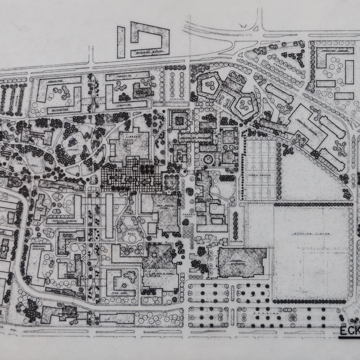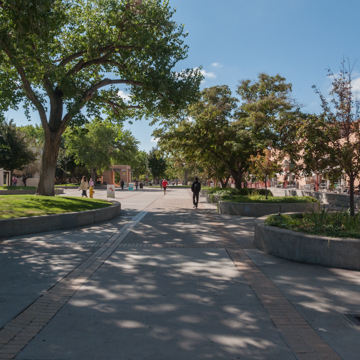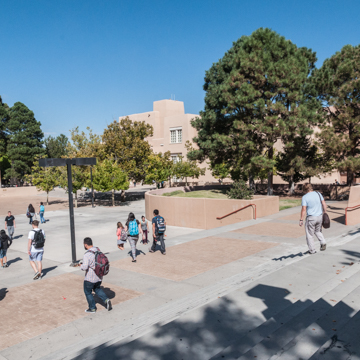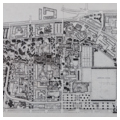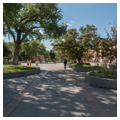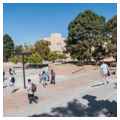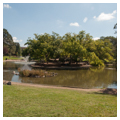The landscape plan for the University of New Mexico by the Californian landscape architect Garrett Eckbo is a classic example of his mature work and, while parts have been eroded by later planning decisions, it remains a largely intact and defining feature of the campus.
Eckbo was selected in 1962 to integrate the 1959 Warnecke masterplan with a central campus landscape plan. Trained as a modernist in the 1930s, Eckbo emphasized site conditions and client needs over historical precedents, although by the 1960s he was responding to nascent movements in ecological and community-based design, which he associated with the Picturesque tradition and the parks of Frederick Law Olmsted. He willingly accepted the pedestrian campus established by the Warnecke plan, yet criticized its proposal to turn buildings inward onto small green courtyards while separating them with large open areas of desert.
Instead, Eckbo immersed the campus in a continuously shaded and pastoral landscape. Campus streets became pedestrian malls, with hardscaping punctuated with raised circular planters for trees. Along the south side of Zimmerman Library, Smith Plaza was initially laid out with planters and groves of trees, only to be redesigned in response to university officials who wanted an open assembly space reached by a monumental flight of stairs; the upper forecourt to this plaza, a well-shaded oasis with combined planters and benches, reflects Eckbo’s original intentions. The Duck Pond to the west of Zimmerman Library and the contiguous Ash Mall in front of Scholes Hall formed the grassy contours of what Eckbo called a “Central Park,” with curving paths threaded between lawns and clusters of trees.
The plan was both refined and carried out in phases between 1962 and 1976, starting with the north-south axis of Cornell Mall (replacing a street of that name), followed by Smith Plaza, and concluding with the Duck Pond and Ash Mall. From 1976 until his retirement from practice in 1983, Eckbo served as a consultant, working with Guy Robert Johns; Johns, who began his career in Eckbo’s office, continued to fill in unfinished pieces of Eckbo’s plan after he became the university landscape architect in 1975.
References
Eckbo, Garrett. “Pilgrim’s Progress.” In Modern Landscape Architecture: A Critical Review, edited by Marc Treib, 216-219. Cambridge: MIT Press, 1992.
Hooker, Van Dorn. Only in New Mexico: An Architectural History of the University of New Mexico. Albuquerque: University of New Mexico, 2000.
Treib, Marc, and Dorothée Imbert. Garrett Eckbo: Modern Landscapes for Living. Berkeley: University of California, 1997.
University of New Mexico. Department of Facility Planning Records. Center for Southwest Research, University Libraries, University of New Mexico.
University of New Mexico. Department of Facility Planning Drawings. Center for Southwest Research, University Libraries, University of New Mexico.

